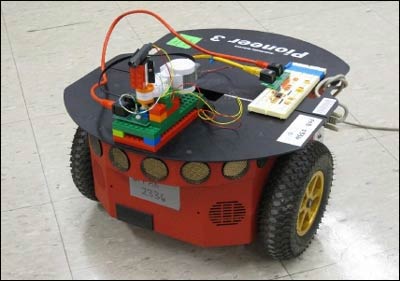This unit focuses on the design and analysis of physical systems. General principles are developed in terms of circuit theory and are applied to design a light sensor to enable the robot to seek and follow a moving source of light.

| Topics | Kirchhoff’s voltage law (KVL), Kirchhoff’s current law (KCL), op-amps, Thevenin equivalents |
| Lab Exercises |
Build robot “head”:
|
| Theme | design and analysis of physical systems |
Looking for something specific in this course? The Resource Index compiles links to most course resources in a single page.










